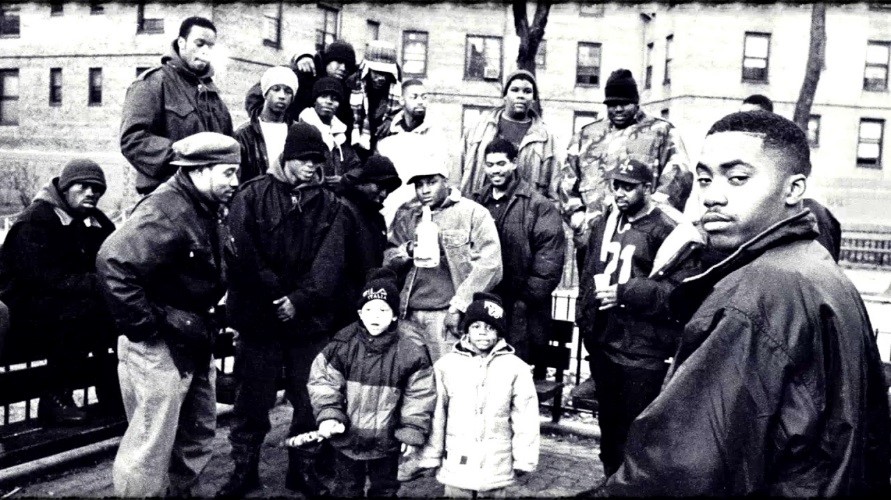20 Years Later Why 1998 Was the End of the Golden Age of Hip Hop
Many Hip Hop enthusiasts speak with nostalgia about the so-called “Golden Era” of Hip Hop. This is an era where monumental artists, albums, and songs…
Many Hip Hop enthusiasts speak with nostalgia about the so-called “Golden Era” of Hip Hop. This is an era where monumental artists, albums, and songs defined the essence of the genre. As much as many who love Hip Hop speak of the past with great admiration, there is just as much discussion about the end of the Golden Age. The argument arises then as to when the Golden Age was and when did it end? Arguably many historians of the genre place the beginning of Hip Hop in 1973 with DJ Kool Herc. Yet in truth, true golden age of the Hip Hop music would not come until much later. Examining the genre from the aspects of creativity, albums, and impact the most important period was between 1988 and 1998.

During this period, innovative artists arose to produce new sounds in production and lyricism. Hip Hop also took off in popularity in regions outside of its traditional hotbeds of New York and Los Angeles. In the history of Hip Hop, 1998 was important because not only was it the end of the Golden Era, but many influential artists came through that year. What made the genre such a powerful force at the time, was that no other genre of music was as candid as it was about the various plights experienced by black people in inner cities throughout America. It shed light into the multi-faceted yet painful black American sub-culture. Many artists were able to use situations of wealth disparity, social injustice, and inner-city violence as a source of inspiration for their music. It could be argued that the inception of the politically conscious aspect of Hip Hop occurred in 1988.
One of the best examples of this is KRS-ONE with his 1988 sophomore album “By Any Means Necessary”. By Any Means Necessary encapsulated an astute analysis of the impact of the crack epidemic. In 1988, West Coast pioneers N.W.A highlighted the preponderant police brutality and gang violence which plagued Los Angeles. In addition to socio-political commentary advancement in lyricism also occurred this year. This was the year Rakim released his classic album “Follow the Leader” and Big Daddy Kane released “Long Live the Kane”. The legendary Juice Crew would also put out their group album this year “In Control Volume 1”. 1988 served as the catalyst for the Golden Era from the perspective of production, lyricism, and classic hip-hop albums. Monumental figures in the genre such as Tupac Shakur, Biggie Smalls, Nas, Outkast, and Jay-Z would later credit many artists during this era as influences.

The year 1998 was an important year because it was the year following the legendary yet toxic east versus west coast period in hip-hop. This would also be the year many of the artists that are now considered legends achieved commercial success. Jay-Z released Hard Knock Vol. 2 which was his most commercially successful album up until that point. Enormous commercial success was achieved by another legend in this era DMX with his “It’s Dark and Hell Is Hot” Album. 1998 was one of the last years in hip-hop that was also packed with critically acclaimed albums. Bronx lyricist Big Pun released his classic album “Capital Punishment” which was one of the highest selling albums by a Latino artist.
Black Star, a group composed of Talib Kweli & Most Def released “Black Star” which was homage to the Black Star Line of Pan-African leader Marcus Garvey. 1998 was the last year in Hip Hop of a perfect balance of commercial success and creative lyricism. This was clear in the Lauryn Hills classic “The Miseducation of Lauryn Hill” which was praised by fans and critics alike. In lieu of such critical acclaim and album sales, this was the year that the South really began to take off. Southern Hip Hop was around and doing well prior to 1998 with artists such as Scarface, UGK, 8Ball & MJG, and Outkast. In that year the advent of Southern Rap labels and the mass appeal of southern Hip Hop became solidified. Record labels such as No Limit and Cash Money Records have become legendary when discussing the importance of Southern Hip-Hop.

In many respects the artists, trends, and record labels that would arise served as a template for Hip Hop lyricists, entrepreneurs, and singers who would debut post-1998. The magnitude of 1998 cannot be emphasized enough. In one year there was a sundry of contributions made from both new and established artists from all regions. “Aquemini” the groundbreaking and critically acclaimed 3rd album by Outkast came out in 1998. This album wasn’t just unique for its critical acclaim but it put southern Hip Hop into the discussion of elite lyrical content, production, and originality.
Hip Hop music is innovative, inspiring, and has grown to become a global phenomenon. There are still great hip-hop artists, albums, and people pushing the culture forward. Yet, 1998 stands alone because it was such culturally rich year for the genre. There was no monotony in the climate and no one particular region dominated. In 1998 the climate was full of innovative Hip Hop based entrepreneurs. It was the close of the Golden Age of Hip Hop because it was the last time that both Hip Hop pioneers and newcomers both shared the charts and made groundbreaking music. Sadly enough due to less emphasis on creativity and lyricism, we may never see another year like 1998 again.
By: Hoyt K. Timmons
Disclaimer: The views, opinions and positions expressed by the authors and those providing comments, opinions on this website are theirs alone, and do not necessarily reflect the views, opinions or positions of M-Lifestyle and their affiliates. M-Lifestyle does not claim ownership of any images used, unless otherwise specified.
![]()






